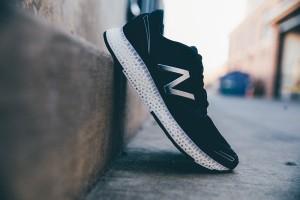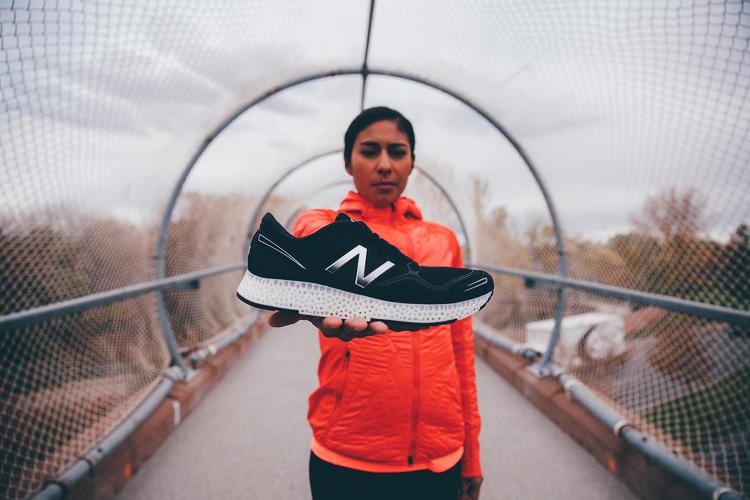 I never thought I’d be saying this, and it pains me to say it now, but…Kanye West was right. Well, sort of. West freaked out earlier this year when he learned about the potential 3D printing has to revolutionize the fashion and textile industry. He claimed to fear a future when people are “making their shoes at home,” putting billionaire designers such as himself out of business. Well, we’re not quite at that point yet, although the COO of Nike agrees that it’s not far off.
I never thought I’d be saying this, and it pains me to say it now, but…Kanye West was right. Well, sort of. West freaked out earlier this year when he learned about the potential 3D printing has to revolutionize the fashion and textile industry. He claimed to fear a future when people are “making their shoes at home,” putting billionaire designers such as himself out of business. Well, we’re not quite at that point yet, although the COO of Nike agrees that it’s not far off.
For now, shoe manufacturers are safe, but they’re beginning to increasingly wield the instrument of their own potential destruction. Adidas recently announced that they’re going to be using 3D printing to manufacture custom-fit shoes for their customers, and today, New Balance stated that in April 2016, they will be releasing a limited edition high performance running shoe with a 3D printed midsole.
The shoe, which is the first of its kind available to consumers, is the result of a collaboration between New Balance and 3D Systems. The latter’s new DuraForm Flex TPU elastometric powder was used to create the insoles, which, according to New Balance, were carefully developed to provide a maximum cushioning effect on the points of the feet that usually produce the most pressure. The resulting athletic shoes, which were printed using SLS technology, “leverage the benefits of 3D printing and breakthroughs in materials science to achieve an optimal balance of flexibility, strength, weight and durability.”
“This project represents an unprecedented technical collaboration in footwear,” said Sean Murphy, senior manager of innovation and engineering at New Balance. “To deliver this level of performance with a 3D printed component, we paired experts in running and biomechanics with leaders in plastics engineering, material development and generative design. These are the types of collaborations that will drive footwear design and manufacturing in the future.”
The as-yet unnamed shoes will make their first public appearance at the 2016 Consumer Electronics Show in January. They will be displayed at 3D Systems’ booth, and will also be worn by the employees manning the booth. The shoe will be made available for purchase in April, at first only in New Balance’s hometown of Boston, and then later at select worldwide locations.
New Balance isn’t new to 3D printing. In 2013, the company created data-customized, 3D printed spike plates for track athlete Jack Bolas, and has continued to supply its sponsored athletes with customized 3D printed spikes and cleats. They had been working on creating a 3D printed midsole for a while, but previous prototypes were too heavy and rigid to benefit athletes. The new DuraForm midsole is only a little over an ounce heavier than a traditional foam insole, and New Balance is confident that they can make it lighter before April.
“In 2013 we said this was the future of footwear manufacturing and today we are proud to bring the future to consumers with a fully 3D printed midsole,” said Robert DeMartini, president and CEO of New Balance. “With 3D printing we are able to pursue performance customization at a whole new level. The New Balance Innovation Team is showcasing the latest in performance running and these advancements signify an important step forward to becoming one of the world’s top athletic brands.”
A price range has not yet been announced, but the 3D printed shoes will, unsurprisingly, be more expensive than New Balance’s other offerings. Because the 3D Systems printers used in New Balance’s Lawrence, Massachusetts manufacturing plant can only print about eight pairs of midsoles per day, availability will be somewhat limited. For the time being, the shoes will be standardized and sold off the shelf, but according to Katherine Petrecca, New Balance’s general manager of studio innovation, the company hopes to begin offering customization options on a trial basis as early as 2017.
“With injection molding, there are significant restrictions in how you can design a part or how you can engineer variable properties into a single part,” said Petrecca. “And that’s what’s really attractive about SLS printing. It really opens up design capabilities in being able to design a part down to the millimeter and opens the door to performance customization.”
What are your thoughts on this partnership and resulting shoe? Discuss in the 3D Printed New Balance Forum thread on 3DPB.com.
https://youtu.be/y3pmP5rkIiA
Subscribe to Our Email Newsletter
Stay up-to-date on all the latest news from the 3D printing industry and receive information and offers from third party vendors.
Print Services
Upload your 3D Models and get them printed quickly and efficiently.
You May Also Like
3D Printing News Briefs, July 2, 2025: Copper Alloys, Defense Manufacturing, & More
We’re starting off with metals in today’s 3D Printing News Briefs, as Farsoon has unveiled a large-scale AM solution for copper alloys, and Meltio used its wire-laser metal solution to...
3DPOD 260: John Hart on VulcanForms, MIT, Desktop Metal and More
John Hart is a Professor at MIT; he´s also the director of the Laboratory for Manufacturing and Productivity as well as the director of the Center for Advanced Production Technologies....
3D Printing News Briefs, June 28, 2025: Defense Accelerator, Surgical Models, & More
In this weekend’s 3D Printing News Briefs, 3YOURMIND was selected to join an EU Defense Accelerator, and PTC has announced model-based definition (MBD) capabilities within Onshape. Finally, a study out...
EOS in India: AM’s Rising Star
EOS is doubling down on India. With a growing base of aerospace startups, new government policies, and a massive engineering workforce, India is quickly becoming one of the most important...




































